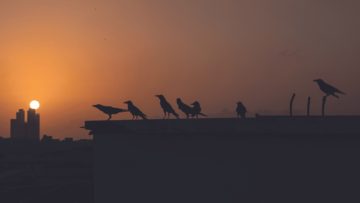Rafia Zakaria in Orion Magazine:
 IT IS RAINING IN Karachi as I write this, an ugly, punishing rain that returns with increasing fury every year. This year, as every year, the monsoon is supposed to be the “worst ever,” and, like every year, the city’s flimsy slums and crater-riven roads will collapse with the weight of the rain. On these deadly rainy days, the water that falls from above meets the sewage that bubbles up from below, both equally careless about the location of their union. Some people will lose everything this very day and leave, returning to villages with no opportunity but less despair. Others will arrive in their place. This constant count of coming and going is the beat of Karachi, a city that grew suddenly out of the coastal desert when India’s Muslims needed a place to land in 1947.
IT IS RAINING IN Karachi as I write this, an ugly, punishing rain that returns with increasing fury every year. This year, as every year, the monsoon is supposed to be the “worst ever,” and, like every year, the city’s flimsy slums and crater-riven roads will collapse with the weight of the rain. On these deadly rainy days, the water that falls from above meets the sewage that bubbles up from below, both equally careless about the location of their union. Some people will lose everything this very day and leave, returning to villages with no opportunity but less despair. Others will arrive in their place. This constant count of coming and going is the beat of Karachi, a city that grew suddenly out of the coastal desert when India’s Muslims needed a place to land in 1947.
In this migrant city, the hooded crows have always stayed, multiplying wildly to become the most common bird. A few years ago, a reader wrote a letter to the editor at Dawn, the English newspaper where I am a columnist, saying that if you want to estimate the filth and neglect of a city, count the crows. One study did, and found the letter writer’s words to be entirely true: when humans do not attend to waste and carrion, the crows nourish on it, multiplying with feral glee. Crows are everywhere in Karachi, damaging the windshields of jets parked at Jinnah Airport or lasciviously stealing the one piece of bread a beggar is eating on the side of the road. They also perch atop the giant garbage heap next to our house, wading carelessly in the dirty puddles, picking out bits of wire and plastic to fashion their very own urban nests.
More here.
